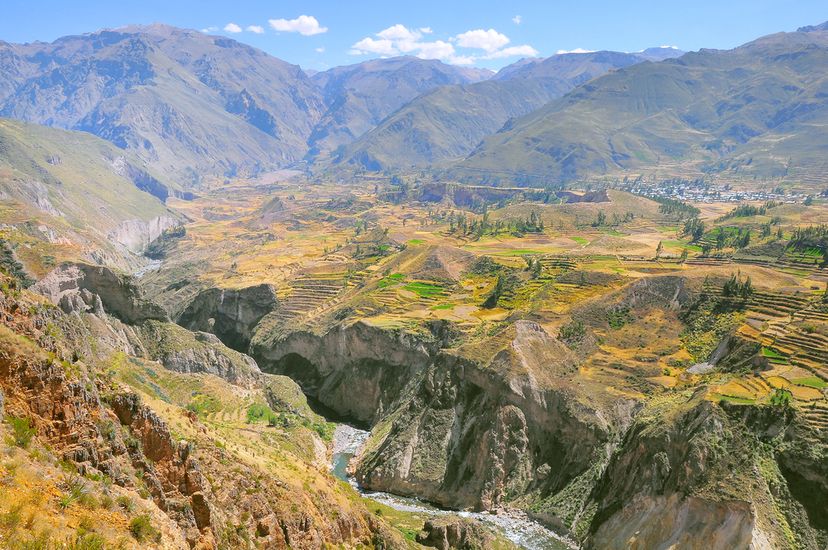
What’s in a name? When we’re talking about canyons, one name will always come to mind before any other: the Grand Canyon in Arizona, USA. The name sure seems like a successful marketing ploy—not only is the Grand Canyon the first name that comes to mind, it’s often the only one. That’s despite the fact there are plenty of other canyons out there, scattered around the world, some of them larger, wider or deeper than the Grand Canyon. Here are just 9 examples of canyons that are just as “grand” as their American counterpart.
Advertisement
9. Katherine Gorge (Australia)
Bordering on the better-known Kakadu National Park, Nitmiluk National Park in the Northern Territory of Australia is home to a series of gorges on the Katherine River and Edith Falls. The Katherine Gorge is the central attraction of the park, which was formerly called Katherine Gorge National Park. The Katherine Gorge is actually a series of 13 gorges cut deep into the sandstone by the Katherine River. The gorges are home to a series of rapids and falls, as the Katherine River moves through the area. In the dry season, the gorges are disconnected from each other as the water dries up. Cruises will take you up to the 5th gorge, but you can also strike out and explore on your own via canoe or flat-bottomed boat. There are also 2 campgrounds and a number of trails throughout the park.
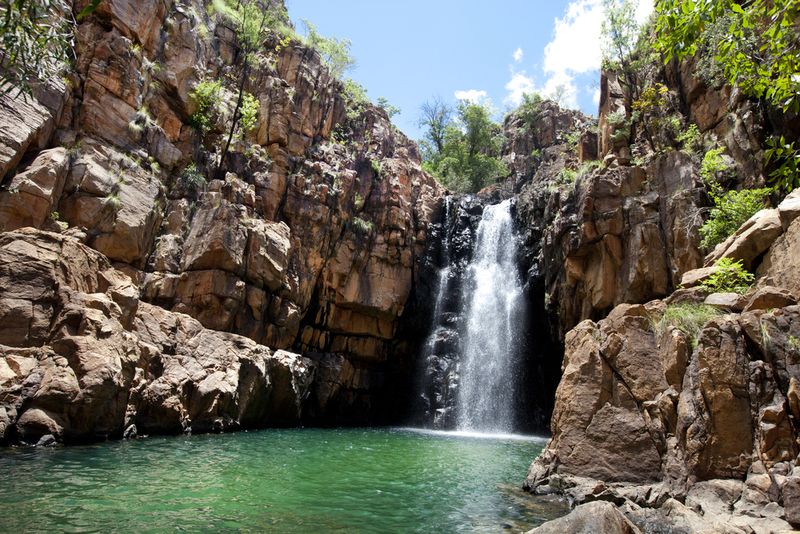
8. Copper Canyon (Mexico)
Move over, Grand Canyon; Mexico’s Copper Canyon system should probably be your top North American canyon destination. This group of 6 distinct canyons, located in the southwestern part of Chihuahua state, is larger and deeper than the Grand Canyon. They’re also breathtaking, thanks to the large deposits of copper in their formation: the canyon walls are eye-catching copper and green hues. Copper Canyon has been the site of tourist development for the Mexican state, although there has been some resistance from local peoples and there are concerns about developing a tourist industry that protects and respects this sensitive ecosystem. Popular ways of exploring the canyons include hiking, biking and horseback riding. The Ferrocarril Chihuahua al Pacifico runs between Chihuahua and Los Mochis, and the train travels through Canyon Urique, the main canyon in the system.
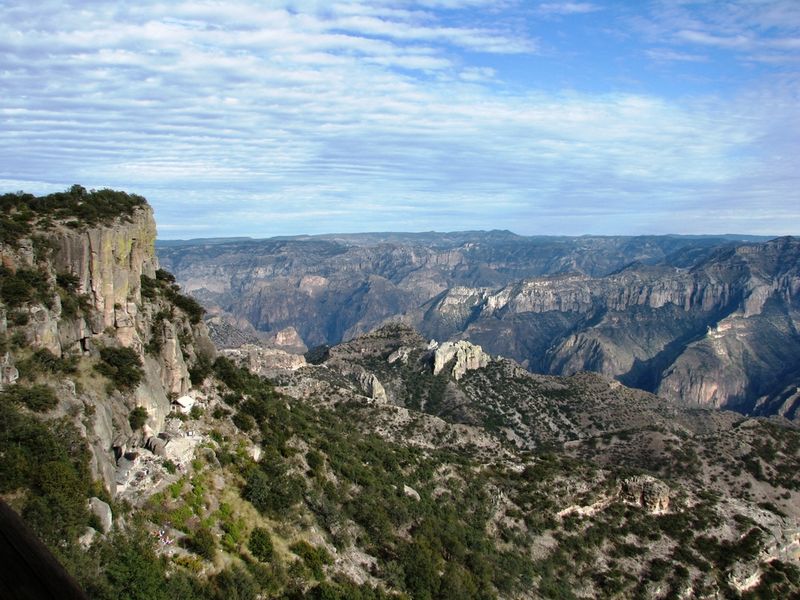
7. Nine Mile Canyon (Utah)
Don’t let the name fool you—Nine Mile Canyon in Utah is actually more like 40 miles (60 kilometers) long. While it’s not necessarily the longest, deepest or widest canyon in the U.S.—and certainly not in the world—it has earned itself a reputation as the world’s “longest art gallery,” thanks to its extensive collection of rock art by the Fremont and Ute peoples. Ruins from these cultures also make the area an archaeological hotspot. There may be 10,000 or more individual pieces of rock art in the canyon, including the famous Cottonwood Panel, making it North America’s largest concentration of rock art. Many sites in the canyon have been added to the National Register of Historic Places since 2009, and there are plans to add more in the coming years as efforts to preserve the rich heritage of Nine Mile Canyon continue.

6. Rugova Canyon (Kosovo)
The Rugova Canyon, also known as the Rugova Gorge, is approximately 16 miles (25 kilometers) long and up to 1,000 meters deep in some places, making it one of Europe’s longest and deepest canyons. The canyon was carved out over years as the glacier near modern-day Pec melted and eroded through the Prokletije Mountains, near the border between Kosovo and Montenegro. The Pec Bistrica river cuts through the canyon, dividing it in 2. Waterfalls, colossal rocks and caves dot the landscape. The Gryka e Madhe (Great Canyon Cave) is one of the better-known caves in the area, although only about 11 kilometers of the cave system have been explored to date. Obviously, the area is popular for spelunkers, but it is also popular for rock-climbers, reflected in the recent addition of a via ferrata (iron road) for climbers.
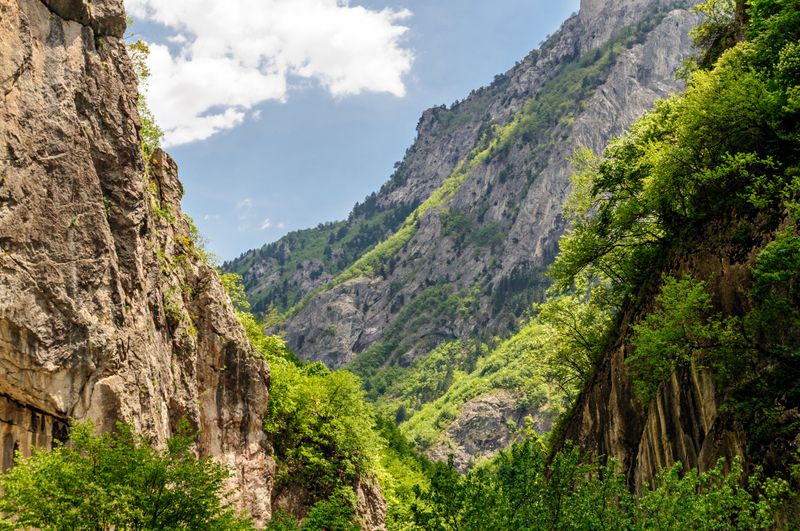
Advertisement
5. Itaimbezinho Canyon (Brazil)
About 170 kilometers from Porto Alegre, in the Brazilian state of Rio Grande do Sul, is the Itaimbezinho Canyon. The canyon is located within the Aparados da Serra National Park, which was created in 1959 specifically to protect the canyon. One of Brazil’s first parks, Aparados da Serra is relatively small and has a daily cap on the number of visitors in order to better protect sensitive environments. The canyon is approximately 6,000 meters (6 miles) long and has a maximum width of 2,000 meters at some points, with a depth of about 1 mile, making it the largest canyon in Brazil. Waterfalls dot the landscape as the Rio do Boi wends its way through the canyon. The park offers hiking tours through the area. The Cotovelo Trail is a popular option, as it winds around the edge of the canyon.
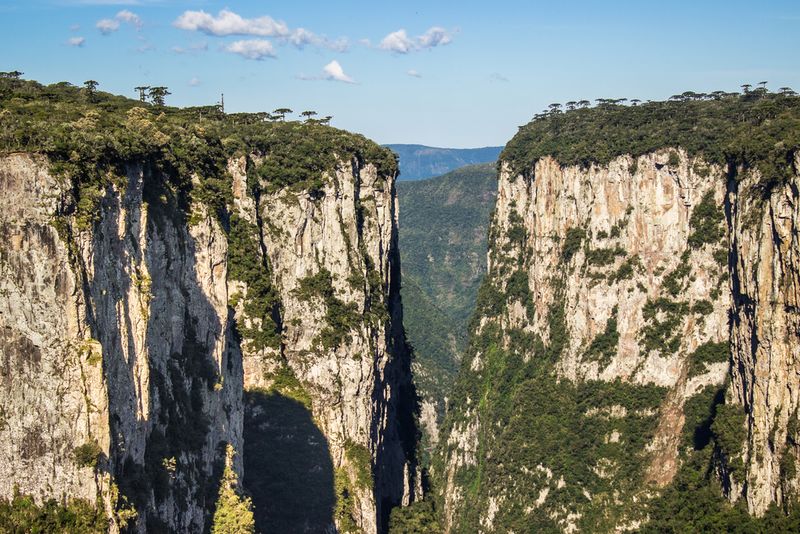
4. Fish River Canyon (Namibia)
Namibia is home to plenty of natural wonders, including the Namibian desert’s infamous red sands, but this African country is also home to Fish River Canyon—not only the largest canyon in the country, but the largest canyon on the whole African continent. The canyon is approximately 160 kilometers (100 miles) in length, with gaps up to 27 kilometers wide and depths of nearly 550 meters in some areas. The Fish River Canyon Hiking Trail follows the canyon for about 88 kilometers, from Hobas to the hot spring resort Ai Ais. There are a number of footpaths and some shortcuts, which means that the hike will be largely up to the hikers. While hiking the trail can take 5 days, trail running is a popular and faster way of taking in the canyon—the current record for trail running is just under 7 hours.
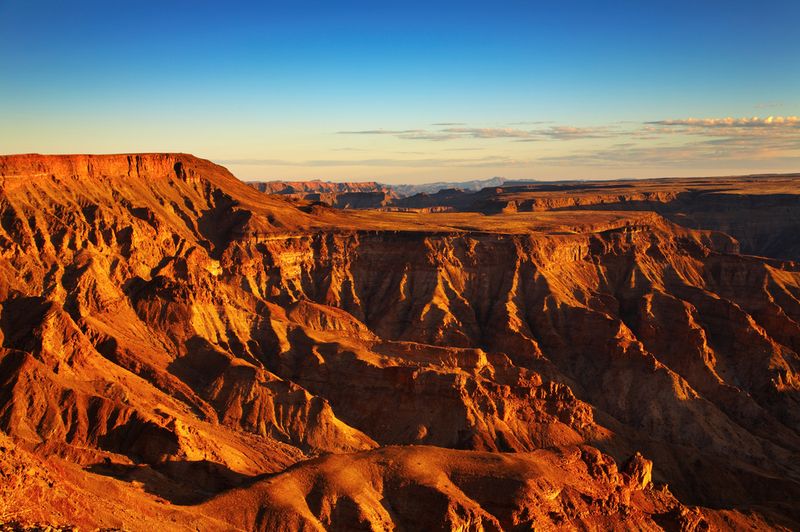
3. Colca Canyon (Peru)
The Colca Canyon, located on the Colca River in Peru, is one of the country’s most popular tourist destinations. That’s fitting, considering that the canyon is one of the deepest in the world, with a depth of 3,270 meters (10,725 feet). More than twice as deep as the Grand Canyon, it is only the second-deepest gorge in Peru, ranking behind the Cotahuasi Canyon. The Colca Valley area surrounding the canyon is popular with tourists for other reasons as well: the area is rich with pre-Inca cultures, including the Collagua and Cabana peoples who still inhabit the area, as well as Spanish colonial towns. The Canyon is also noted for bird-watching, as it is home to the Andean condor and tourists flock to see them flying at close range near the Cruz del Condor. Ruins, rock art and local festivals are also popular attractions.
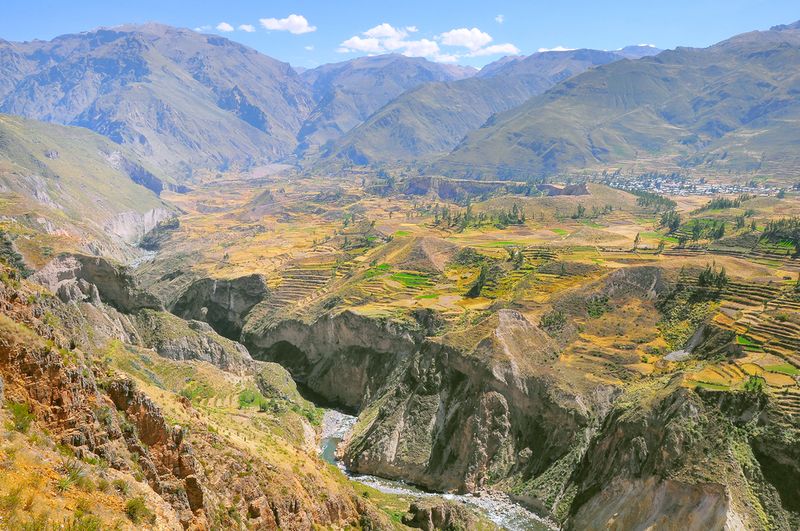
2. Tiger Leaping Gorge (China)
Part of the Three Parallel Rivers of Yunnan World Heritage Site, the Tiger Leaping Gorge lies on the Jinsha River, a tributary of the Yangtze River. The river passes between Jade Dragon Snow Mountain and Haba Snow Mountain in a series of rapids, down cliffs 6,600 feet (2,000 meters) high, creating one of the world’s deepest and most spectacular river canyons. The name comes from a legend, in which a tiger leaped across the gorge at its narrowest point to escape a hunter. Even then, the tiger was still leaping across 82 feet (25 meters)! The area is popular with hikers and backpackers from other areas of China and abroad. The high-road hiking path is well-maintained and takes hikers through a variety of micro-ecosystems along the gorge’s length. Although the gorge is only 15 kilometers long, the high road is approximately 22 kilometers (14 miles).
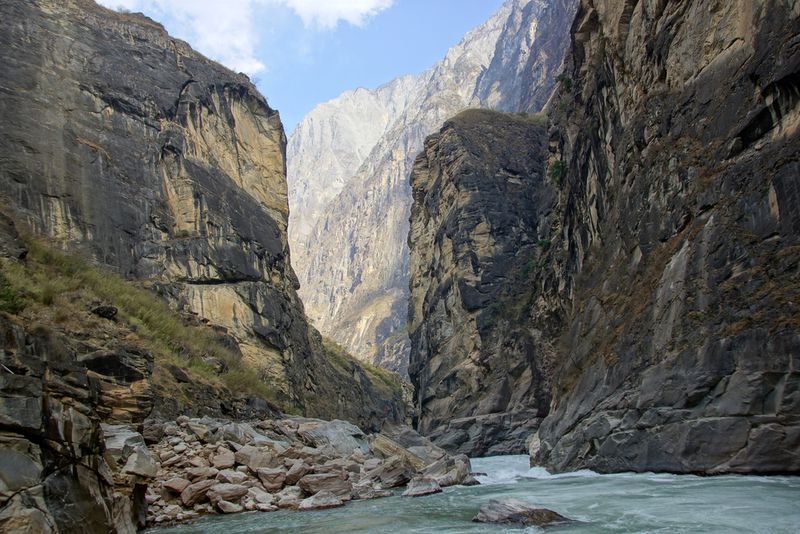
l. Indus River Gorge (Pakistan)
The Indus River passes through the Himalayas, rising in Tibet and flowing through India and Pakistan, before emptying into the Arabian Sea. In the northern territories of Pakistan, the river must pass through the Nanga Parbat region, home of the world’s ninth-highest peak, the infamous Nanga Parbat. As the Indus winds through this mountainous region, it flows through enormous gorges, some of them 17,000 feet (5,200 meters) deep. Near Dasu Patan in Kohistan, the gorge plunges to a maximum depth of 6,500 meters—making it one of the deepest, if not the deepest, canyon in the world. Some dispute about the depth of the gorge and other contenders continues today. Nanga Parbat is likely the better-known tourist attraction in the area, but the Deosai Plains and the Karakorum Highway are also popular with visitors.
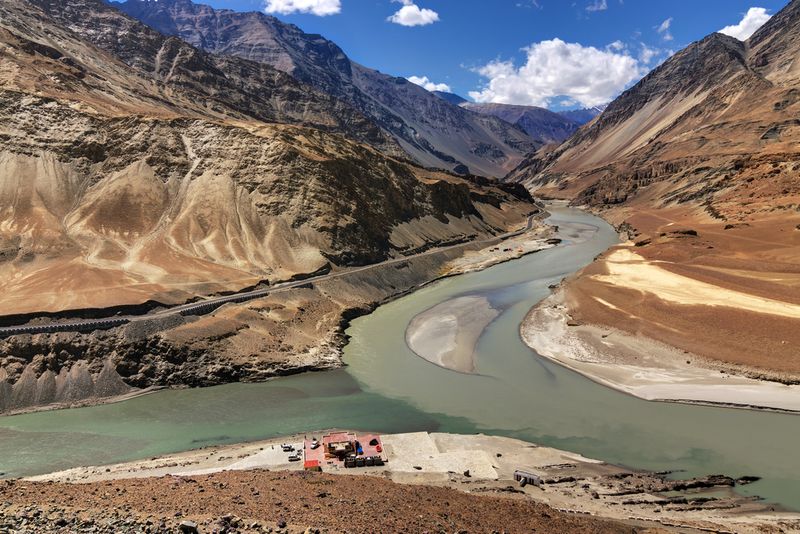
Advertisement